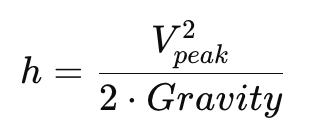17 de August de 2025
Loaded Jumps and VBT: Practical Application in Power Training for Team Sports
Talking about velocity-based training (VBT) in team sports sounds appealing: individualized prescription, real-time feedback, and objective monitoring of fatigue and performance. But in day-to-day practice, things change. Training time is tightly scheduled, technological resources are often limited (sometimes there’s just one linear encoder for the whole group), and the need for simplicity and operational flow often prevents modeling each load or velocity with textbook precision. Moreover, not all athletes can be tested weekly, nor can all sessions include data collection. In this context, VBT may seem unrealistic or hard to sustain. However, if it’s understood as a flexible tool, rather than a rigid system, it can become a strategic ally for developing power in key tasks like loaded jumps, without overcomplicating the training structure.
Velocity Zones, Linear Models, and a Functional View of Power
Much of the literature on VBT has focused on traditional exercises like squats, bench press, or deadlifts, where clear velocity zones have been defined in relation to load percentages and training goals. These ranges, such as 0.5 to 0.7 m/s for moderate loads aimed at power development, offer a useful framework that can be adapted as an operational reference, even without individualized data. Anchoring decisions to validate linear models allows practical implementation without exhaustive testing.
That said, it’s also important to clarify what we mean by “power.” While mechanics define it as the product of force and velocity, in the field of physical preparation, the concept is often approached from a more functional, phenomenological perspective — the ability to apply force explosively in a sporting context. This pragmatic view, though less precise, effectively guides decisions in real-world settings, where the goal is to trigger a specific adaptive response rather than scientifically measure every variable. Based on this logic, choosing tools that move moderate loads at high speeds, such as Olympic lift derivatives or ballistic actions like loaded jumps or upper-body throws, is key to training power effectively and specifically.
Limitations of Applying Classic Models to Ballistic Movements
One of the main challenges in applying VBT to ballistic gestures like loaded jumps is that there’s no real 1RM for these types of movements. Unlike traditional lifts, where max load can be directly measured or estimated through submaximal reps, it’s neither methodologically useful nor mechanically safe to determine a max load for explosive movements involving flight. To bypass this, two practical strategies have been proposed to estimate a “functional equivalent” of 1RM and operate within similar velocity or power zones as with basic lifts:
- Use the closest basic lift as a reference: For loaded jumps, squats are often used. For example, if an athlete has a 1RM squat of 180 kg, 50% of that (90 kg) could be used as a representative ballistic load. Alternatively, one can estimate based on velocity: since a 1RM squat typically moves at ~0.3 m/s, 50% would fall near 0.8–0.9 m/s.
- Estimate the load that allows a 10–15 cm jump height: This heuristic, used in applied contexts, reflects the athlete’s peak power output for that task. It can be estimated:
- From flight time (though this is error-prone)
- Or more accurately, with a linear encoder, measuring peak velocity and applying kinematic formulas h=Vpico22*Gravedad to estimate jump height.

For instance, if an athlete reaches 1.4 m/s peak velocity at the end of the propulsive phase, we can estimate that jump height.

That makes 1.4 m/s a “magic number”, a benchmark indicating the functional max load for that gesture. If a loaded jump hits that velocity, it’s likely near the ballistic 1RM.
While imperfect, this framework allows for safe, effective, and reasonably accurate prescriptions without maximal testing or sophisticated equipment, keeping VBT logic adapted to explosive tasks.
Determining Power Load: Safety Margins and Target Velocity
Once the functional 1RM is estimated say, using the 1.4 m/s benchmark, the next step is identifying the optimal load for power training. Research suggests peak mechanical power output occurs between 60% and 80% of 1RM, regardless of the exercise. But in team sport settings, training at the extremes of that range can be counterproductive: 60% may be too light and fail to generate sufficient tension; 80% might induce excess fatigue or interfere with other session components.
That’s why a practical, safe approach is to use ~70% of the estimated 1RM. This keeps the effort within the power zone, with a functional margin of ±10%. Since we’re not directly measuring 1RM, we use 1.4 m/s as the 100% reference. Following the inverse relationship between load and velocity, 70% should be faster.
Assuming a roughly linear relationship, we apply a basic inverse rule of three:

Thus, to train at ~70% of ballistic 1RM, we aim for a load that allows a peak velocity around 2.0 m/s. Using velocity rather than absolute weight enables precise, individualized prescription — sensitive to the athlete’s neuromuscular state on any given day — without needing formal testing.
Volume, Cut-Off Criteria, and Progression Strategies
Once the target velocity is set, volume prescription becomes crucial. Here, the Prilepin chart, widely used in Olympic lifting, serves as a helpful guide for VBT-based power training. For moderate loads (~70% 1RM), the recommended total volume per session is 18–30 reps, with 24 as a solid reference in team settings. Sets can follow a quality-based structure: prescribe a target of 3–5 reps per set, but include a cut-off based on velocity loss. In our example, using 2.0 m/s as the goal:
- Stop the set once the planned reps are completed, or
- Stop when velocity drops below 1.8 m/s (10% loss)
This ensures explosive intent and prevents unnecessary fatigue accumulation.
For long-term progression, there are three main strategies:
- Manipulate total volume: Start at 18 reps/session and progress toward 30 while keeping velocity constant (~2.0 m/s). Adjust if signs of fatigue or technical breakdown appear.
- Vary the power zone range: Change the load (and thus target velocity) within the 60–80% range, equivalent to ~2.33 m/s (60%) to ~1.75 m/s (80%). This stimulates different parts of the power spectrum but requires more control.
- My preferred method: Keep everything constant. Set a clear velocity target (e.g., 2.0 m/s), a fixed high-quality volume (e.g., 18 total reps), and allow natural progression in load as athletes improve. As they move the same velocity with more load, we know they’ve adapted. Monitor, log, and adjust only when needed.
Conclusion: Between Science and Heuristics, a Robust Solution
The reality of training in team sports rarely allows the application of pure scientific models. Time, resources, and daily variability require fast, informed, and executable decisions. This article combines validated literature models with practical heuristics to build a simple yet robust system for applying VBT to loaded jumps, without complex testing or unattainable tools.
Is it the theoretically optimal solution? Probably not. But it’s useful, flexible, adaptable, and precise enough for the real-world demands of team sports. A tool that prioritizes stimulus quality, athlete safety, and operational feasibility. And in contexts where efficiency matters just as much as science, that’s worth a lot.
